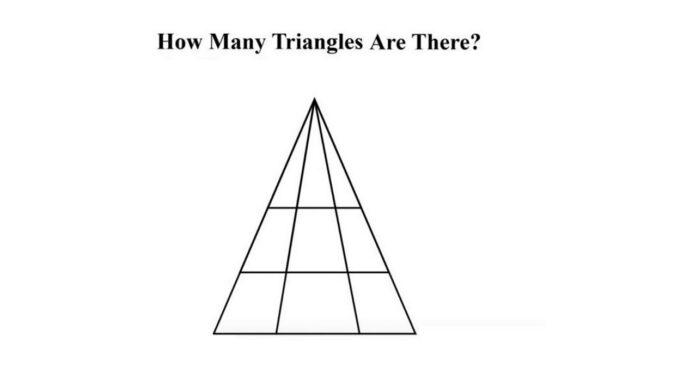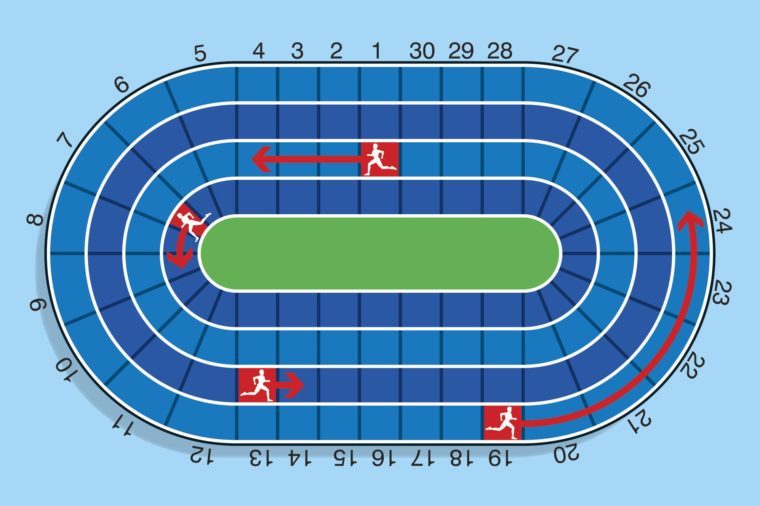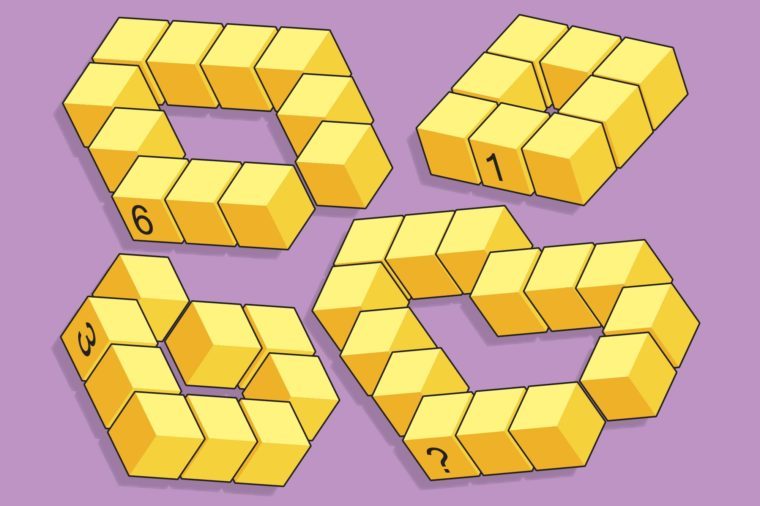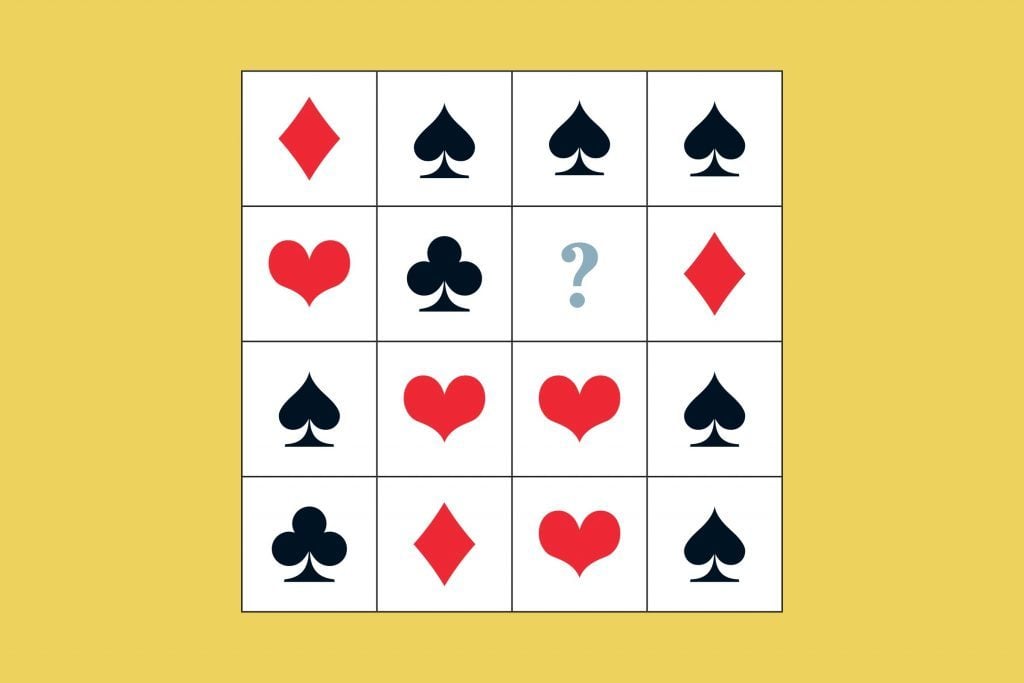Poll
 | 21 votes (45.65%) | ||
 | 14 votes (30.43%) | ||
 | 6 votes (13.04%) | ||
 | 3 votes (6.52%) | ||
 | 12 votes (26.08%) | ||
 | 3 votes (6.52%) | ||
 | 6 votes (13.04%) | ||
 | 5 votes (10.86%) | ||
 | 12 votes (26.08%) | ||
 | 10 votes (21.73%) |
46 members have voted
Call h the height of the rectangle and d its width, which is also the cylinder's diameter. The volume of the cylinder is:
V = π(d/2)2 x h
Given the perimeter of the rectangle as 6, the perimeter equation looks like:
2d + 2h = 6
or, solving for h, would be
h = 3 - d
Substitute h into the volume equation:
V = π(d/2)2 x (3 - d)
multiply and you get:
V = 3π/4 x d2 - π/3 x d3
To get a maximum, take the first derivative, dV/dd, and set it equal to 0:
3π/2d - 3π/4d2 = 0
Now, solve for d and you get:
d = 2, which means h = 1.
Plug d and h into the volume equation, and you get:
V = π(2/2)2 x 1
which yields:
V = π
Quote: JoemanMax volume = π
Call h the height of the rectangle and d its width, which is also the cylinder's diameter. The volume of the cylinder is:
V = π(d/2)2 x h
Given the perimeter of the rectangle as 6, the perimeter equation looks like:
2d + 2h = 6
or, solving for h, would be
h = 3 - d
Substitute h into the volume equation:
V = π(d/2)2 x (3 - d)
multiply and you get:
V = 3π/4 x d2 - π/3 x d3
To get a maximum, take the first derivative, dV/dd, and set it equal to 0:
3π/2d - 3π/4d2 = 0
Now, solve for d and you get:
d = 2, which means h = 1.
Plug d and h into the volume equation, and you get:
V = π(2/2)2 x 1
which yields:
V = π
"V = 3π/4 x d2 - π/3 x d3
To get a maximum, take the first derivative, dV/dd, and set it equal to 0:
3π/2d - 3π/4d2 = 0"
Isn't dV/dd = 3π/2 x d - π x d2?
Also, pardon me for being pedantic, but you didn't show that this makes V a maximum as opposed to a minimum or an inflection point.
Area of top of cyclinder = Pi r^2.
Vol = h * Pi r^2.
Vol = (3 - 2r) * Pi r^2.
Vol = 3 Pi r^2 - 2 Pi r^3.
dV/dr = 6 Pi r - 6 Pi r^2 = 6 Pi r *(1 - r)
This is 0 when r=0 or r=1.
Clearly when r=0, v=0; and r = 1.5 v=0. Hence at r=1 this is a maximum.
r=1 gets d=2, h=1, Vol = Pi.
Quote: ThatDonGuyQuote: JoemanMax volume = π
Call h the height of the rectangle and d its width, which is also the cylinder's diameter. The volume of the cylinder is:
V = π(d/2)2 x h
Given the perimeter of the rectangle as 6, the perimeter equation looks like:
2d + 2h = 6
or, solving for h, would be
h = 3 - d
Substitute h into the volume equation:
V = π(d/2)2 x (3 - d)
multiply and you get:
V = 3π/4 x d2 - π/3 x d3
To get a maximum, take the first derivative, dV/dd, and set it equal to 0:
3π/2d - 3π/4d2 = 0
Now, solve for d and you get:
d = 2, which means h = 1.
Plug d and h into the volume equation, and you get:
V = π(2/2)2 x 1
which yields:
V = π
"V = 3π/4 x d2 - π/3 x d3
To get a maximum, take the first derivative, dV/dd, and set it equal to 0:
3π/2d - 3π/4d2 = 0"
Isn't dV/dd = 3π/2 x d - π x d2?
Also, pardon me for being pedantic, but you didn't show that this makes V a maximum as opposed to a minimum or an inflection point.
And yes, I did not demonstrate that it was a maximum. I did check my answer before posting, and the volume decreased using both d = 2.01 and 1.99. I figured that was good enough for an internet message board! :)
d = 0 is also a solution, but obviously not a meaningful one for a maximum volume.
Quote: WizardI agree that pi is the correct answer. Congratulations to all those who solved it.
Just use 2 formulas and differentiation( dy/dx) will get it.
r = radius of cylinder
h= cylinder height
dV/dr = PI(6r - 6r^2) = 0
r=1
V = PI *(1)^1 *1= PI
Quote: MoscaShouldn’t the volume be expressed as cubic units? Am I missing something here? If so, sorry for being not math literate.
The units in the volume are cubic units - not the number. If the perimeter is, say, 6 cm, then the maximum volume is π cm3.
Quote: ThatDonGuyThe units in the volume are cubic units - not the number. If the perimeter is, say, 6 cm, then the maximum volume is π cm3.
Thanks, that’s what I thought.
Imagine the following game, which costs $1.00 to play. At the beginning of each round, a random number between 0 and 1 is generated and then multiplied by $1.00. You get paid a portion of that as follows. If, for instance, you’re on round 3 and the random number is 0.8169 then you get paid 0.8169 / (3 * 3.8169) = $0.07.
You can play as many rounds as you want and you keep winnings from all rounds. Total winnings are paid when you decide to stop playing, and that is the only time they are rounded to the nearest cent.
For calculation purposes, you can assume players will play forever. What is the house edge of this game?
Quote: Ace2New puzzle:
Imagine the following game, which costs $1.00 to play. At the beginning of each round, a random number between 0 and 1 is generated and then multiplied by $1.00. You get paid a portion of that as follows. If, for instance, you’re on round 3 and the random number is 0.8169 then you get paid 0.8169 / (3 * 3.8169) = $0.07.
You can play as many rounds as you want and you keep winnings from all rounds. Total winnings are paid when you decide to stop playing, and that is the only time they are rounded to the nearest cent.
What is the house edge on this game?
Edit: Never mind. I see that on each round, the player get paid RAND / [ round * ( RAND + round)]. So, the series of wins would converge, and my guess is definitely wrong. (RAND = the random number, round = the round number.)
Quote: unJonThis one will be truly easy for those on this forum, but it’s an old classic and I used to use it as an interview question (updated for the current crisis):
With 10% of the population having COVID-19, the world is in extreme crisis. Thankfully, a new Pharma company has just created an instant COVID-19 test that is 90% accurate. World leaders have mandated that everyone take the test in the hopes this will enable the virus to finally be contained. You dutifully show up at Walmart (wearing your N95 mask and staying six feet away from everyone else) to get tested in the pharmacy. Bad news: the test is positive for COVID-19.
What is the probability you actually have COVID-19?
This puzzle shows the problem with coming up with a quick test that isn't accurate enough and why it's taking so long to develop a test that is reliable enough to use. It's all down to Bayes Theorem...Quote: Ace2New puzzle:
Imagine the following game, which costs $1.00 to play. At the beginning of each round, a random number between 0 and 1 is generated and then multiplied by $1.00. You get paid a portion of that as follows. If, for instance, you’re on round 3 and the random number is 0.8169 then you get paid 0.8169 / (3 * 3.8169) = $0.07.
You can play as many rounds as you want and you keep winnings from all rounds. Total winnings are paid when you decide to stop playing, and that is the only time they are rounded to the nearest cent.
For calculation purposes, you can assume players will play forever. What is the house edge of this game?
Keeping things simple take a step back and look at a typical population of 100.
90 of them are clear, but if tested 81 would show up clear and 9 would get a false positive.
The other 10 have the disease, and if tested 9 would show up as having the disease and 1 would get a false negative.
Thus
(a) 9 are clear but get a false positive.
(b) 9 have the disease and get the correct result.
So if someone comes back with a positive test result it could be any of the 9 (a) or any of the 9 (b). Thus it is 50-50 whether they have the disease.
This is why it's so important to get a better test.
Using a test which is 99% correct, then in 1000 people; 900 clear, 9 get false positives; 100 have it, and 99 get correct result; so we're 91% (99/108) certain they have the disease. Similarly 95% test gets 68%, so you need a better test to be useful. Still better than 50% with the 90% test.
Quote: Ace2New puzzle:
Imagine the following game, which costs $1.00 to play. At the beginning of each round, a random number between 0 and 1 is generated and then multiplied by $1.00. You get paid a portion of that as follows. If, for instance, you’re on round 3 and the random number is 0.8169 then you get paid 0.8169 / (3 * 3.8169) = $0.07.
You can play as many rounds as you want and you keep winnings from all rounds. Total winnings are paid when you decide to stop playing, and that is the only time they are rounded to the nearest cent.
For calculation purposes, you can assume players will play forever. What is the house edge of this game?
Quote: Ace2New puzzle:
Imagine the following game, which costs $1.00 to play. At the beginning of each round, a random number between 0 and 1 is generated and then multiplied by $1.00. You get paid a portion of that as follows. If, for instance, you’re on round 3 and the random number is 0.8169 then you get paid 0.8169 / (3 * 3.8169) = $0.07.
You can play as many rounds as you want and you keep winnings from all rounds. Total winnings are paid when you decide to stop playing, and that is the only time they are rounded to the nearest cent.
For calculation purposes, you can assume players will play forever. What is the house edge of this game?
That’s in the ballpark. But, as usual, I’m looking for a closed-form solutionQuote: ChesterDoga house edge of about 42.295%.
Quote: gordonm88810%. Because the statement says that 10% of the population have Covid-19. And the question is not about the probability of testing positive, its about whether you actually have the disease.
Quote: Ace2That’s in the ballpark. But, as usual, I’m looking for a closed-form solutionQuote: ChesterDoga house edge of about 42.295%.
1 + LN(n+1) - Hn.
Hn is the "n-th Harmonic Number," which = 1/1 + 1/2 + 1/3 +... + 1/n.
And LN(n+1) is the natural log of n+1.
Looking up the limit as n approaches infinity of Hn - LN(n), I see it has a name, which is the "Euler-Mascheroni constant (gamma)." Gamma is about 0.5772156649.
The limit of Hn - LN(n) would equal the limit of Hn - LN(n+1), so the house edge, for infinite play, would equal 1 - gamma = 0.4227843351...
Quote: Ace2That’s in the ballpark. But, as usual, I’m looking for a closed-form solutionQuote: ChesterDoga house edge of about 42.295%.
In round n, the expecting winnings is INTEGRAL(0,1) {x / (n (n + x)) dx}
= 1/n INTEGRAL(0,1) {x / (n + x) dx}
= 1/n INTEGRAL(0,1) {(1 - n / (n + x)) dx}
= 1/n INTEGRAL(0,1) {1 dx} - 1/n * n INTEGRAL(0,1) {1 / (n + x) dx}
= 1/n (1 - 0) - (ln (n + 1) - ln n)
= 1/n - ln ((n + 1) / n)
The expected winnings over the entire game is the sum of this over all positive integers n, so the house edge = (1 - the expected winnings) x 100%.
The sum over n rounds is 1 + 1/2 + 1/3 + ... + 1/n - (ln 2 - ln 1 + ln 3 - ln 2 + ln 4 - ln 3 + ... + ln (n+1) - ln n)
= 1 + 1/2 + 1/3 + ... + 1/n - ln (n + 1)
The expected winnings is the limit of this as n approaches positive infinity.
However, I do not know how to calculate this, especially as both the sum and the logarithm diverge.
Using Excel, the house edge through 5000 rounds is 42.2884%.
The integral from 1 to n of 1/x dx is Ln(n). You can think of that as the harmonic series in continuous form, which is why, as n gets larger, Ln(n) gets closer to H(n)...the difference converges to the Euler–Mascheroni constant (γ) of ~0.5772
That constant is equal to the integral from 1 to infinity of (1/[x] - 1/x) dx where [x] is the floor function (same as rounddown). Makes sense, it’s just summing all the differences between 1/x (all numbers) and 1/[x] (all parts of harmonic numbers).
The formula for this game, (rand / (round * (round + rand)), is just another way of expressing (1/[x] -1/x). So summed from 1 to infinity it will equal γ. Or I should say, the average of many games will equal γ. Therefore the house edge is 1 - γ =~ 0.4228
Harmonic numbers come up a lot in probability...many “Coupon collector” problems use them. Incidentally, I recently learned that the estimate for the Nth harmonic number can be further refined by adding the term 1/2n - 1/12n^2 + 1/120n^4, which makes approximations very accurate, even for small N. For instance, H(3) is 1/1 + 1/2 + 1/3 = 11/6 = 1.8333333. Using the approximation of Ln(3) + γ + 1/(2*3) - 1/(12*3^2) + 1/(120*3^4) we get 1.833338, so already good to 5 decimal places
I posted this problem on the song thread as a joke. It's a level 6 question on the Putnam test meaning it's really hard. The reason I'm placing it here is that it contains a shortcut. Using logic and visual intuition, it's possible solve the problem in your head without picking up a pencil. So, if you decide to have a go, there's no need to show your work. Just post the answer.

Quote: GialmereIn the unlikely event someone is still contemplating this, try reducing the problem down by one dimension and consider a triangle inside of a circle.
My guess for a triangle in a square is 1/3.
Quote: unJonQuote: GialmereIn the unlikely event someone is still contemplating this, try reducing the problem down by one dimension and consider a triangle inside of a circle.
My guess for a triangle in a square is 1/3.
I'm not sure where the "square" comes from but, your answer (although incorrect) is in the ballpark.
Quote: GialmereQuote: unJonQuote: GialmereIn the unlikely event someone is still contemplating this, try reducing the problem down by one dimension and consider a triangle inside of a circle.
My guess for a triangle in a square is 1/3.
I'm not sure where the "square" comes from but, your answer (although incorrect) is in the ballpark.
Now, I have to figure how to use this result to answer the 3-dimensional problem.
Quote: GialmereIn the unlikely event someone is still contemplating this, try reducing the problem down by one dimension and consider a triangle inside of a circle.
3-dimensional problem: The probability that the tetrahedron made by 4 random points on a sphere enclose the center of the center is 1/8?
2-dimensional problem: The probability that the triangle made by 3 random points on a circle enclose the center of the circle is 1/4.
1-dimensional problem: The probability that the segment made by 2 random points on a line segment enclose the center of the line segment is 1/2.
0-dimensional problem: The probability that the point made by 1 random point on a point encloses the center of the point is 1.
Quote: GialmereQuote: unJonQuote: GialmereIn the unlikely event someone is still contemplating this, try reducing the problem down by one dimension and consider a triangle inside of a circle.
My guess for a triangle in a square is 1/3.
I'm not sure where the "square" comes from but, your answer (although incorrect) is in the ballpark.
Oops circle.
I think the trick is that the problem is equal to the average % surface area encompassed by X-1 points.
So for a two dimensional circle, what is the average % circumference enclosed by two random points on the circle (use the smaller circumference segment)?
Three dimensional: what is the average % surface area covered by the shape enclosed by three random points (use the smaller surface area)?

Quote: ChesterDog3-dimensional problem: The probability that the tetrahedron made by 4 random points on a sphere enclose the center of the center is 1/8?
Ding! Ding! Ding!
You are absolutely correct.
Thanks for the thought - here's a simple proof. (Now to worry about the sphere issue!)Quote: unJon...for a two dimensional circle, what is the average % circumference enclosed by two random points on the circle (use the smaller circumference segment)?...
If the first point picked is assumed to be at the South (Pole), then the secondwill be somewhere (for simplicity assume the RHS) between North and South - in the diagram Point A.
For the triangle to contain the centre the point would have to be between B (where AB crosses the centre) and N (where NS crosses the centre). Thus the probability is length of arc NB / length of circumference. Length(NB)=Length(AS)=length of arc.
Length of arc is uniformly between 1/2 (A=N) and 0 (A=S), so the average is 1/4.

Note it took some time for me to create this diagram so I landed up posting this after the above video. btw thanks for the video it's very instructive.
Quote: WizardGood problem. I had seen it before, so stayed out of it. I wouldn't have filed it as an "easy math problem" (the title of the thread).
Well, here's an easy one:
For what positive value p does 1 + 2 p + 3 p2 + 4 p3 + 5 p4 + ... = 25?
Show your work - none of this "I approximated it on Excel" stuff.
Quote: ThatDonGuyWell, here's an easy one:
For what positive value p does 1 + 2 p + 3 p2 + 4 p3 + 5 p4 + ... = 25?
Show your work - none of this "I approximated it on Excel" stuff.
Let equation A be 25=1 +2p +3p^2 etc... (the equation as stated)
Let equation B be 25p = p + 2p^2 + 3p^3 etc.
Let C equal A minus B to get 25(1-p) = 1 + p + p^2 + p^3 + p^4 etc
Let D be p*C = p + p^2 + p^3 etc
Then C minus D is 25(1-p)^2 = 1
solve to get p=4/5
Quote: rsactuaryLet equation A be 25=1 +2p +3p^2 etc... (the equation as stated)
Let equation B be 25p = p + 2p^2 + 3p^3 etc.
Let C equal A minus B to get 25(1-p) = 1 + p + p^2 + p^3 + p^4 etc
Let D be p*C = p + p^2 + p^3 etc
Then C minus D = 25(1-p)^2 = 1
solve to get p=4/5
Correct.
Another way to do this is to note that:
1 + 2 p + 3 p2 + 4 p3 + ... = (1 + p + p2 + p3 + ...)2.
Quote: ThatDonGuyCorrect.
Another way to do this is to note that:
1 + 2 p + 3 p2 + 4 p3 + ... = (1 + p + p2 + p3 + ...)2.
Yeah, it's been too long since I did stuff like this on a regular basis or I would have recognized that. I kind of got there by first principles.

Quote: GialmereThis one made a splash in India a few years back.

I count
Quote: unJonI count
18
Correct!
Your geometry teacher would be proud.

You're playing a track and field board game with your family during the lockdown. If each of the runner pawns travels the indicated number of spaces every turn, at which numbered spot will all of the runners end up next to one another?
Quote: rsactuaryAt t=6, they will all be at 19. Again at t=36 etc
Correct!
You should consider a career as a game designer.

What number should replace the question mark on the bottom right loop?
Quote: Ace2I’d say 9
Correct!
I'd tell the cubes to dance but they're a bunch of squares.

The playing card suits in the cells above are placed according to a pattern. What’s the missing symbol?
Quote: Ace2I’d say 9
logic please? I'm not seeing anything here.
Number of missing squares in the middle of the shape. Or how many cubes it takes to fill the holes.Quote: rsactuarylogic please? I'm not seeing anything here.
Quote: Gialmere
The playing card suits in the cells above are placed according to a pattern. What’s the missing symbol?
If we assign numeric values to each suit, we can get the same total adding up each known row/column/long diagonal in the grid. The easiest I found is ♢ = 1, ♡ = 2, ♠ = 3, and ♣ = 4. This makes the sum of each known row/column/diagonal = 10. The remaining box must be 3 to make the sums of the unknown row, column, & diagonal = 10.
Since ♠ = 3, the missing suit is a ♠.
Quote: JoemanThe missing suit is a ♠.
If we assign numeric values to each suit, we can get the same total adding up each known row/column/long diagonal in the grid. The easiest I found is ♢ = 1, ♡ = 2, ♠ = 3, and ♣ = 4. This makes the sum of each known row/column/diagonal = 10. The remaining box must be 3 to make the sums of the unknown row, column, & diagonal = 10.
Since ♠ = 3, the missing suit is a ♠.
Correct!
Your response is suitable.


